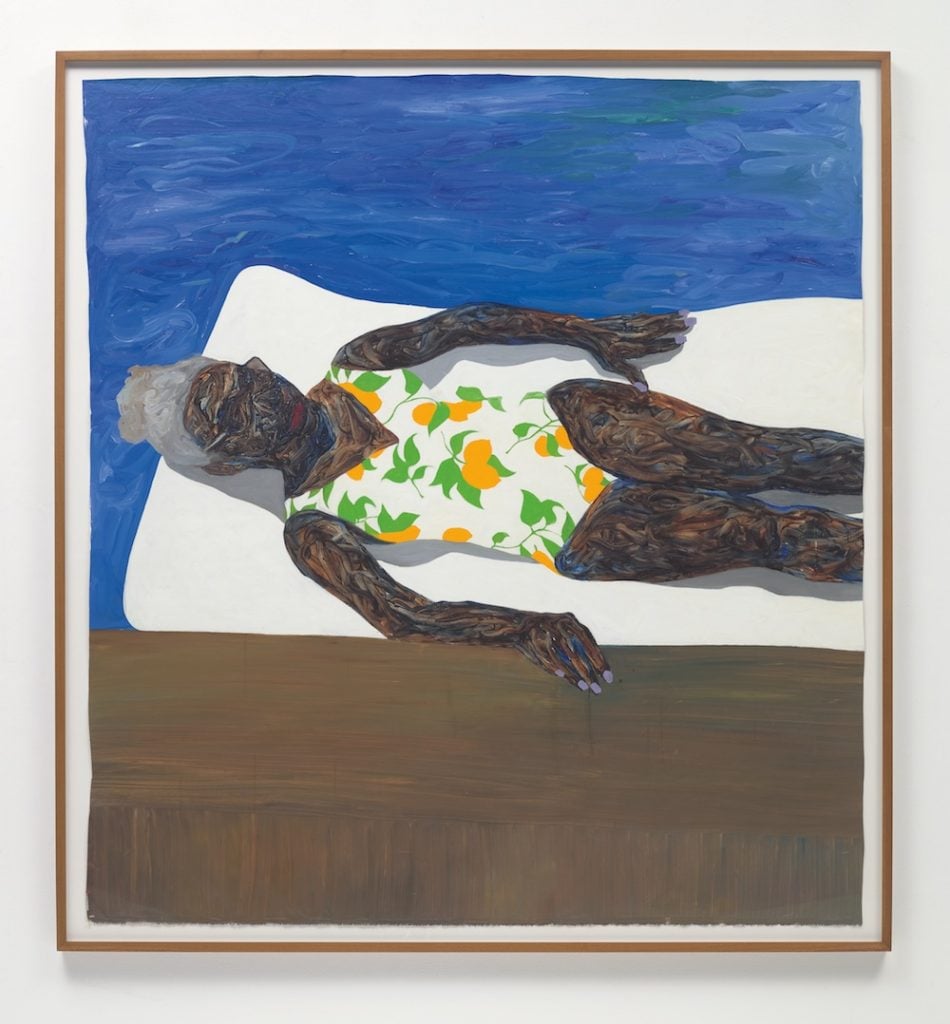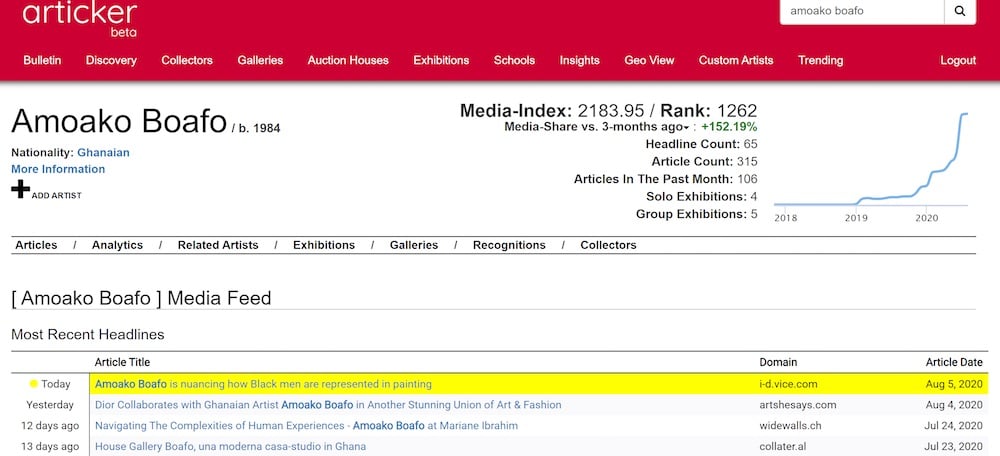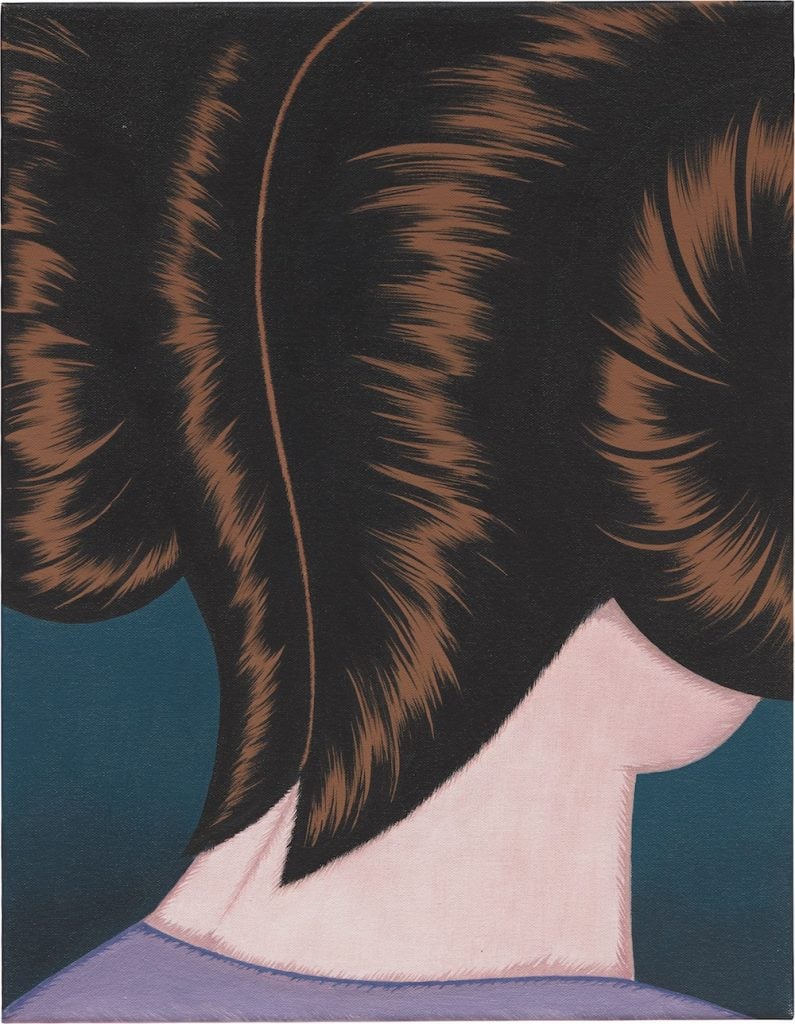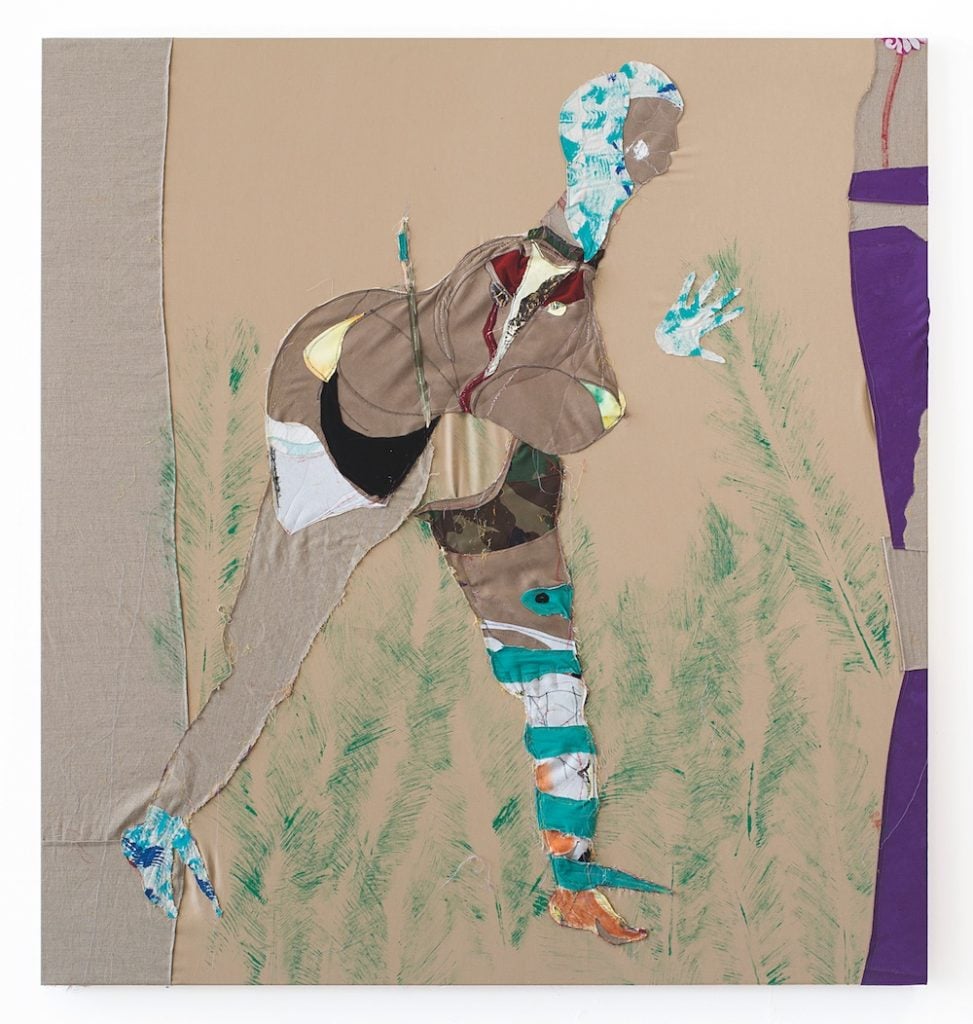Market
Phillips Has Debuted a New Market-Tracking Tool Called ‘Articker’ to Chart Artists’ Media Coverage
A new tech tool lets collectors see which artists are trending and why.

A new tech tool lets collectors see which artists are trending and why.

Tracking an individual artist’s market usually involves a mix of instinct, networking, and research—particularly when it’s an up-and-coming name.
Now, Phillips auction house is aiming to give market watchers and collectors a boost in this arena with Articker, a searchable technology platform that aggregates open-source data on artists and artworks and provides insight into emerging market trends.
In a recent live online demo, Phillips’s deputy chairman and worldwide co-head of 20th century and contemporary art, Jean-Paul Engelen, along with Articker founders (and father-and-son duo) Tomasz and Konrad Imielinski, offered a glimpse into how the platform works.
They showed as an example the search results for 35-year-old market sensation Amoako Boafo, which indicated that the artist’s media presence has increased by 82 percent over the past 18 months. The media presence is sourced from 16,000 online publications as well as information from 50,000 other editorial sources, including galleries, museums, and art fairs, aggregated in real time. Though Boafo’s media presence remains small in relation to, say, Picasso’s, it’s the steep rate of increase that stands out.

Data on Amoako Boafo. Image courtesy Phillips and Articker.
The Ghana native’s work The Lemon Bathing Suit (2019) appeared at a Phillips London auction this past February and shattered its $40,000 to $65,000 estimate to sell for $880,971 (£675,000). Tomasz Imielinski, who is a professor of computer science at Rutgers University, pointed out that the bulk of the media coverage relates not to Boafo’s performance at auction or in gallery shows, but is instead focused on his fashion collaboration with Dior Men this past summer.
“It’s true that his work had had great performance at auction but it’s the collaboration with Dior that dominates, so you can contextualize this information,” he said. The platform also weights media coverage so that a New York Times story, for instance, is ranked higher than a college newspaper.
Articker does not aggregate auction sales data beyond what is reported in the media, nor does it provide other private sale or primary-market prices. “It functions as a complementary tool to the Artnet Price Database, which has transformed our world,” Engelen said (in a bit of flattery to this company’s own market data division).

Julie Curtiss, Princess (2015). Image courtesy of Phillips.
A search for another recent market star, Julie Curtiss, whose current auction record of $423,000 was set at Christie’s London this past November for Pas de Trois (2018), a painting estimated at $100,000 to $150,000, brought up numerous references to KAWS. That constant connection may seem unlikely or mysterious until one realizes that most of the mentions involving Curtiss also note that she was a studio assistant to KAWS before her own career took off.
Curtiss’s media presence has increased by more than 775 percent in the past two years, according to Articker data. Her 2015 painting Princess sold for more than 15 times its low estimate of $6,000, going for $106,250 at Phillips in 2019.
“These cases illustrate the correlation of art market trends to media trends, with Articker offering invaluable insight as to who the emerging talents of the future might be,” according to a statement.
The Imielinskis founded Articker in 2014 and have been steadily building on it in the past six years in connection with Phillips’s digital team. Tomasz Imielinski says that while Google may be the most comprehensive and dominant search engine, “it cannot be best in every single vertical.”
Engelen, who has been using a version of Articker for the past two years, told Artnet News it has helped him and other specialists at the auction house unearth trends and find emerging names ahead of competitors. “It’s incredible, because we all have hunches and conversations about individual shows. Here are two algorithm data guys coming from the tech world and we’re having a conversation with them about Tschabalala Self.”

Tschabalala Self, Lilith (2015). Image courtesy of Phillips.
Phillips sold Self’s work Lilith at auction in 2019. It tripled its low estimate to sell for $163,762 (£125,000). Articker data shows that Self’s media presence has increased by 174 percent in the past 18 months. According to the Artnet Price Database, all 22 auction sales of Self’s work took place over 2019 and 2020, with the current record standing at $567,736 for a sale at Phillips London this past February.
The roughly 150,000 artists Articker covers range from blue-chip masters like Picasso to those currently graduating from MFA programs. It will be available on the Phillips website starting today.